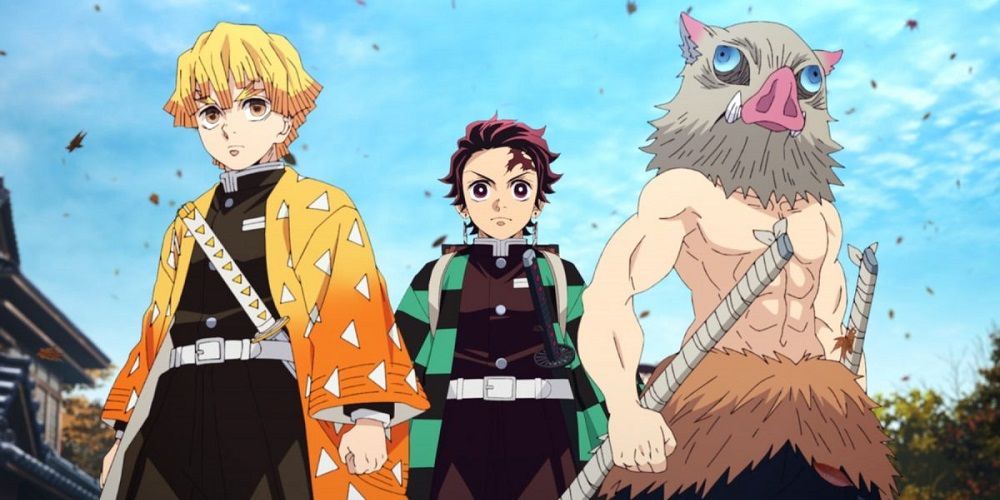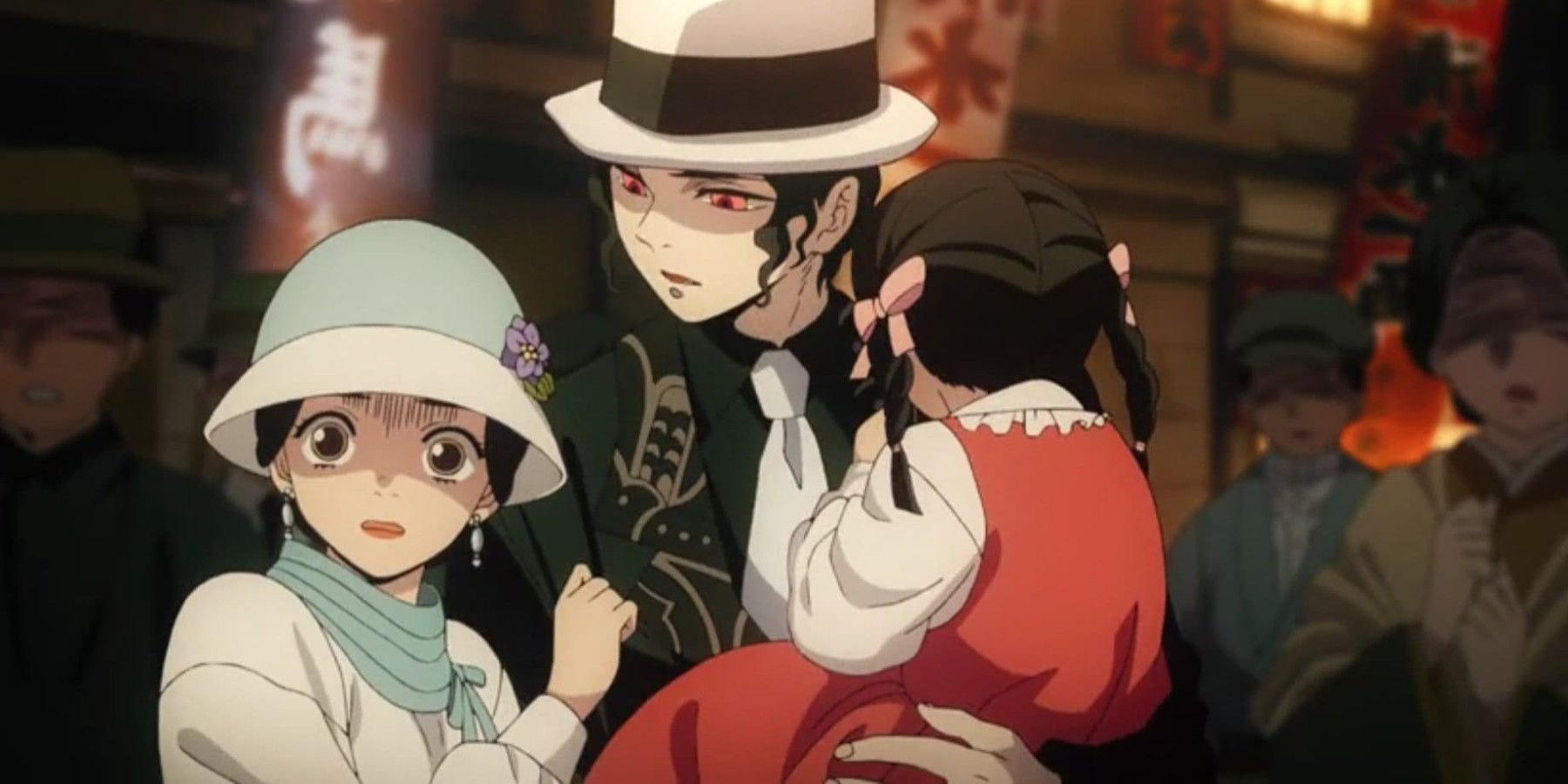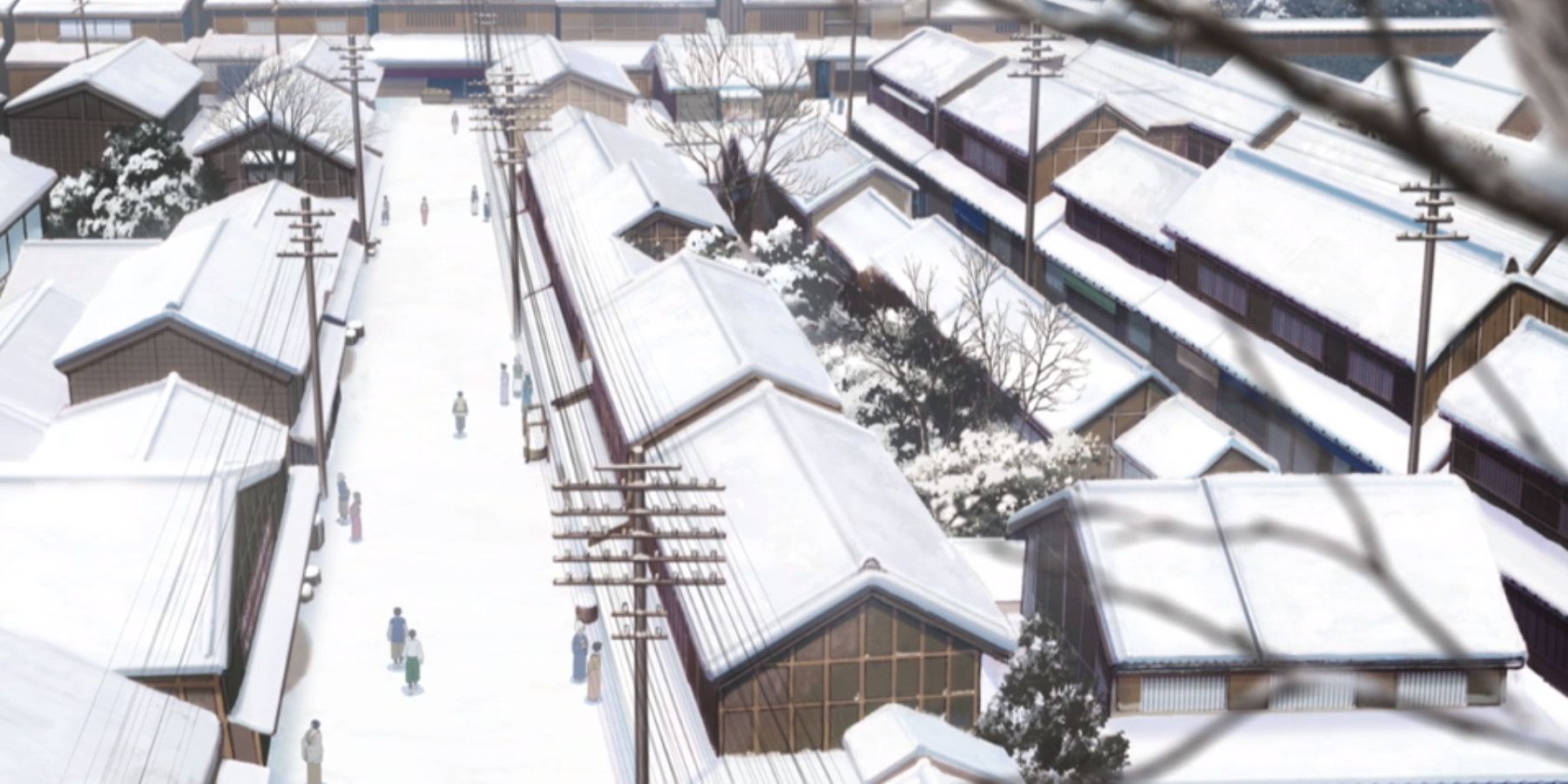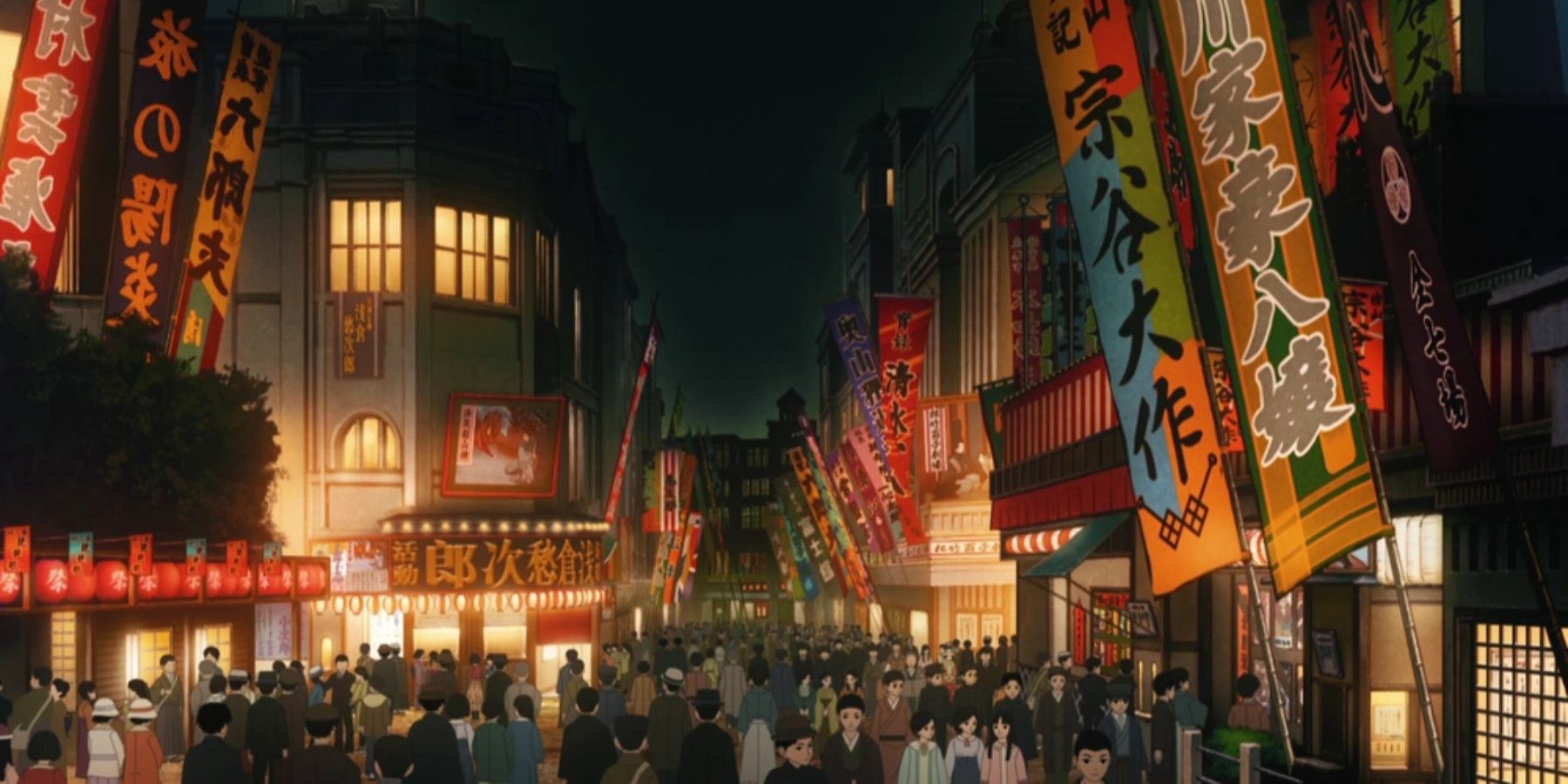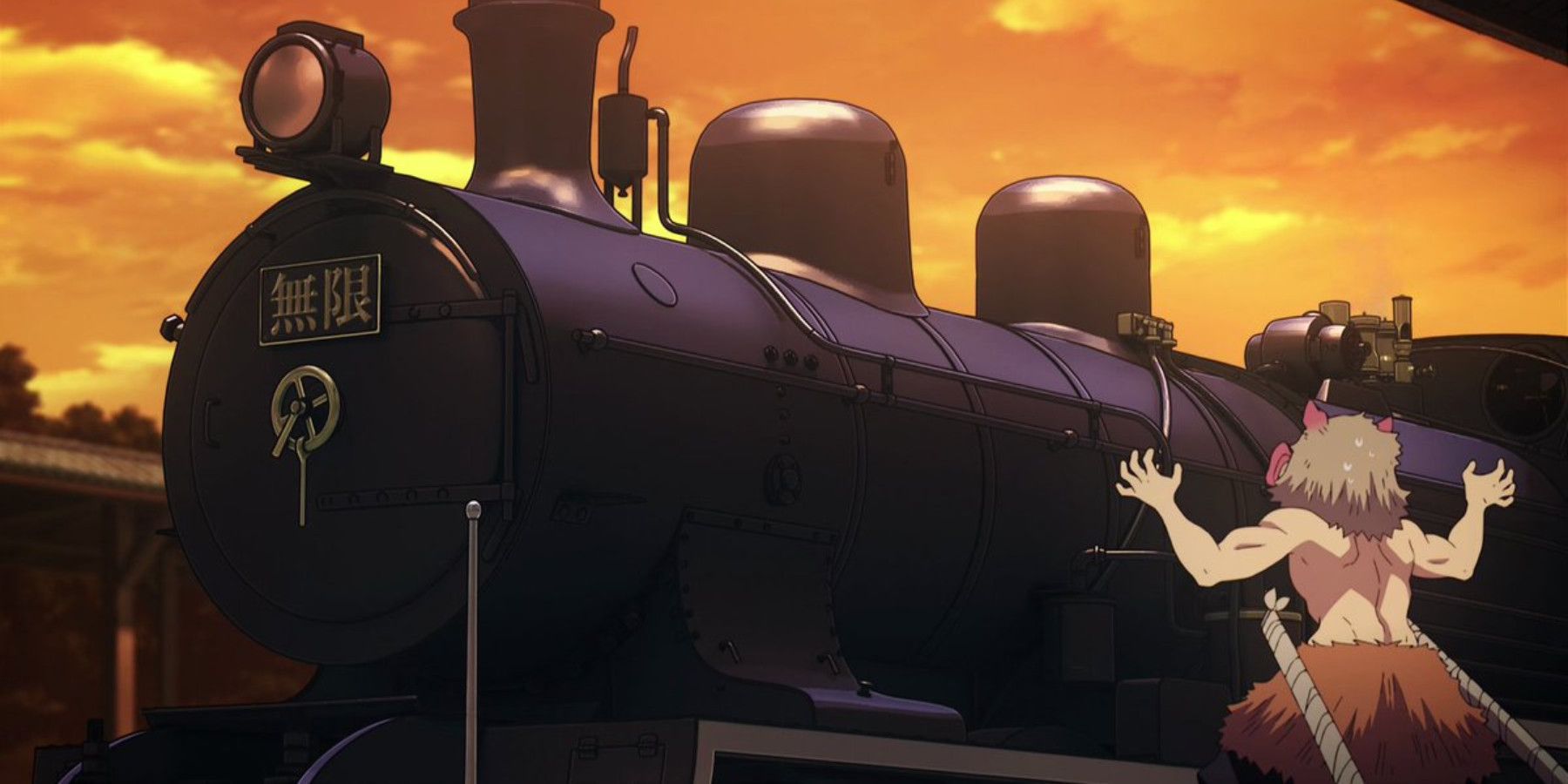Demon Slayer may be a fantasy anime, but it's also set in a real time period of Japanese history. While the exact date is unknown, the time period is the Taishō Era. This era of Japanese history is one of the shortest, lasting only from July 30th 1912 to December 25th 1926. Demon Slayer's story is set somewhere in these 14 years.
Of course, the story of Demon Slayer is one of fiction - there were likely not real demons in the forests and mountains of Japan, praying on and eating humans throughout the Taishō Era. However, the time period does influence the setting all the same. There are some elements of the story that tie it to its historic setting, and we can use those elements to learn a bit about this lesser-known era of Japanese history.
The Influence of Western Fashion
The Taishō Era was shortly after Japan began to slowly open up to the West, and Western influence in the previously closed-off country really began to take off. One of the easiest ways to see this is through fashion. Whereas just a few decades before, everyone still wore only traditional clothes like kimono, hakama, and haori, suddenly women wore dresses and men wore suits. Of course, it wasn’t everyone, but especially in cities like Tokyo Western-style clothes became fashionable.
When Tanjiro first encounters Muzan in Tokyo in Season One, Muzan is dressed smartly in a black suit and white fedora, even while many people around him are wearing kimono. The other characters in the background are also wearing a mix of Japanese and Western fashion. This was very typical of the city in the Taishō Era. Even the Hashira, and Tanjiro and Zenitsu, wear outfits that are very Taishō. Most of the members wear a traditional haori over a black and white uniform that resembles a popular school uniform from the Taishō Era. This style was popularized by the Prussian military at the time. The Hashira’s looks are right out of the Taishō Era, blending Eastern and Western styles.
Widespread Electricity
While electricity was common in the big cities by the start of the 20th century, it was not yet common in the rural parts of Japan. But in the Taishō Era, that began to change. Electricity began to be found even in smaller, more countryside towns and in normal people's homes. From the first episode of Demon Slayer, you can already see this. When Tanjiro goes into the small mountain town to sell charcoal, there are electric poles visible lining the streets.
Electricity was even more common in the cities. When Tanjiro and Nezuko first travel to Tokyo, they are overwhelmed by the busy and brightly lit streets of Ginza. The same thing happens again in the Entertainment District arc, when Tanjiro, Zenitsu, and Inosuke arrive in Asakusa. The three are shocked by the modernity of the city and all of its bright lights, which makes sense. People who grew up more humbly in the countryside would never have seen anything like that before.
The Birth of Modern Tokyo
Piggybacking on the last point about electricity, the Taishō Era also allowed Tokyo to truly modernize. After a large earthquake in 1923 in Tokyo, much of the city was rebuilt and started to become the city we know today. Demon Slayer takes place before that earthquake, though (because the Ryounkaku, a building which can be seen behind Tanjiro when he enjoys a bowl of udon in Ginza, was destroyed in the earthquake) but that doesn't mean the city was not already on the path to modernization.
The electric lights everywhere are the first sign of modernity that can be found in the world of Demon Slayer. Another thing you can notice in the backgrounds specifically of the episodes set in Tokyo is a mix of both Japanese-style and Westernized architecture. Japan had begun to be influenced not only by Western fashion, but also by Western buildings.
The Taishō Era also made Ginza and Asakura into popular shopping districts because they were so fancy and modern compared to the rest of the country. People came from all over to wear fashionable clothes and shop in those districts. Both Ginza in Season One of Demon Slayer and Asakura in the Entertainment District Arc are full of more people than Tanjiro and his friends have ever seen before. And again, as country folk, they are overwhelmed by the huge crowds.
Steam Locomotives
One last point that we can learn about the Taishō Era from Demon Slayer was, along with the other modernization happening, steam engines were becoming popular to travel long distances. Today Japan is interlinked by many high-speed and local trains, but that didn’t start until around the Taishō Era. And it still was not a popular site to see trains outside of major cities, with very few passing through rural Japan. Of course in regard to Demon Slayer we are talking about the Mugen Train! This long-distance train is critical to the globally popular Demon Slayer movie. When Inosuke, who grew up on a mountain, sees the steam engine for the first time he thinks it is a monster. It makes sense that he would have never seen a machine so big in his life, and many rural people in the Taishō Era referred to steam engines as “fire dragons.” They were still relatively novel for most common people.
Overall, the Taishō Era in Japan was one on the cusp of modernization, and the start of Western influence in traditional Japan. These elements play into the setting of Demon Slayer in subtle ways that make a fantasy story have a real historical basis. The Taishō Era is not early as popular as the Meiji or Edo period, both of which are the usual choices for historical anime. That makes Demon Slayer a rare chance to learn a little about a short, little known time in Japanese history that really bridged the gap between traditional and modern Japan more than any other!
Sources Referenced: Japan Wonder Travel, Study.com, All the Anime

